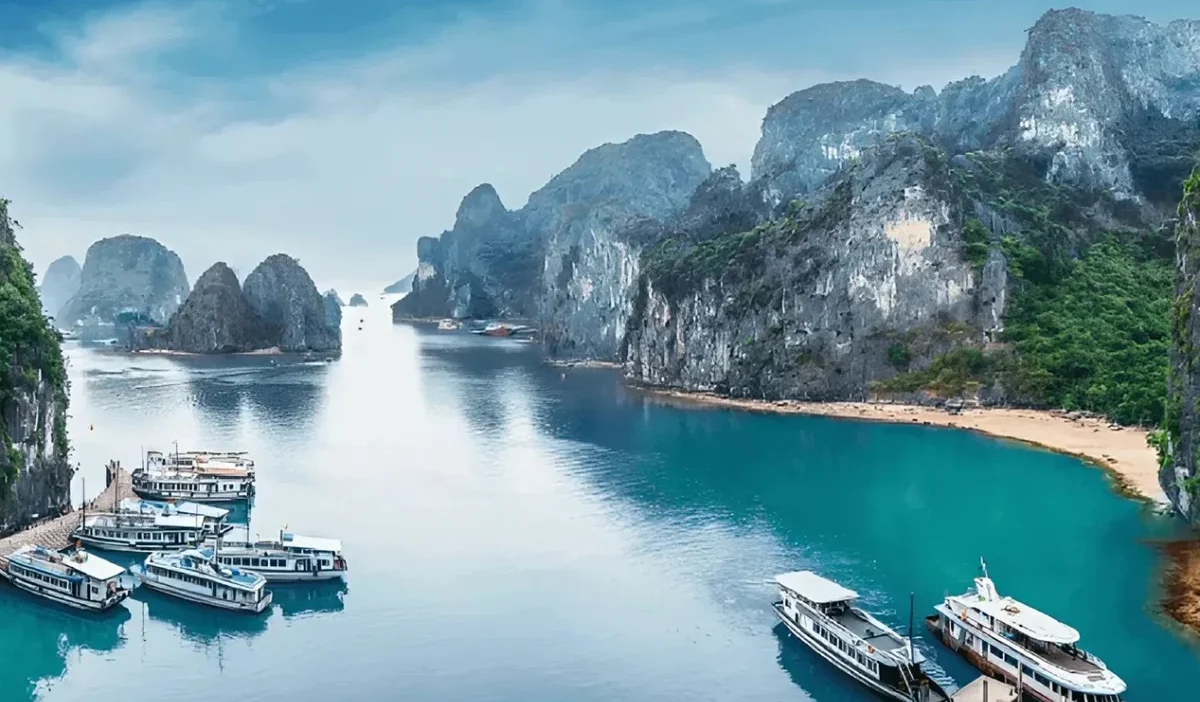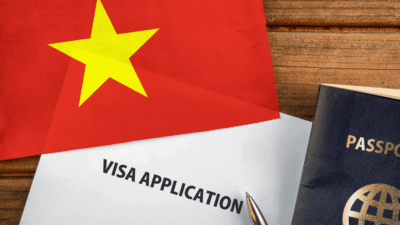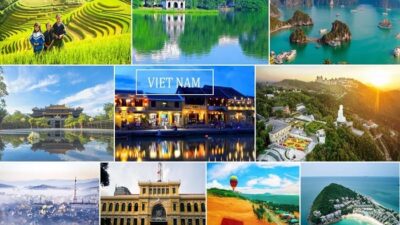Planning a trip to Vietnam and wondering when to go? This comprehensive guide reveals the best time to visit Vietnam, breaking down regional climates, peak and shoulder seasons, and key cultural festivals. Whether you’re chasing sun-soaked beaches, misty mountain treks, or lantern-lit city celebrations, you’ll find the perfect travel window—and insider tips—to make the most of your Vietnamese adventure.
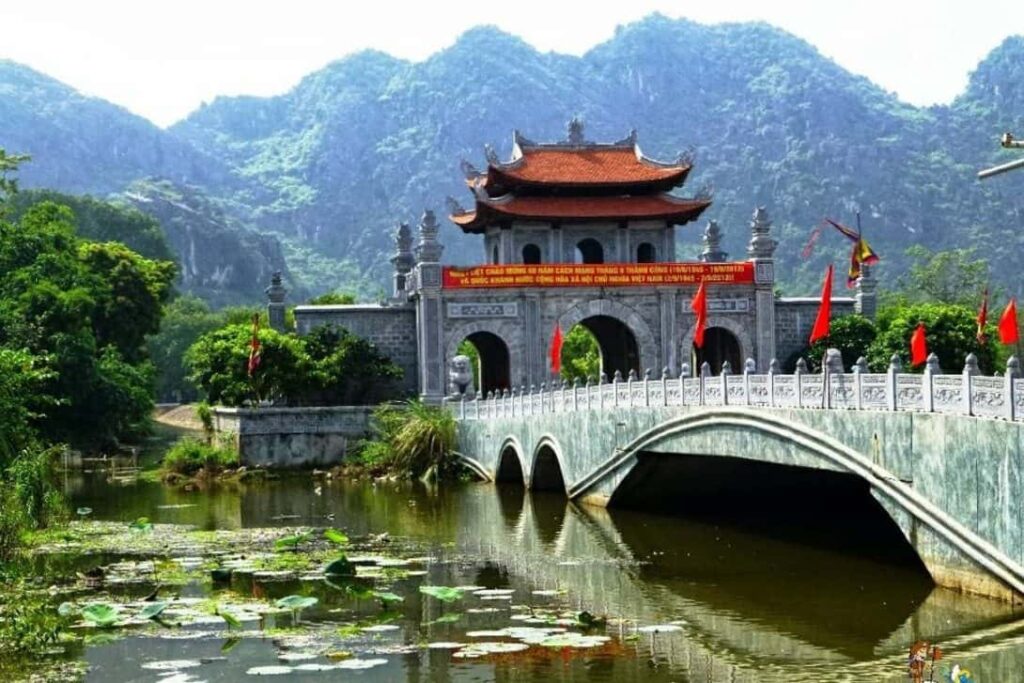
Why Timing Matters
- Weather Comfort: Avoid typhoon-driven floods in Central Vietnam, monsoon downpours in the south, or chilly fog in the north.
- Crowd Levels & Prices: Shoulder seasons can save you 20–50% on flights and hotels.
- Festival Experiences: Celebrate Lunar New Year (Tết), Mid-Autumn Festival, Hue Festival, and more.
- Activity Windows: From beach days and diving to trekking and motorbike loops, weather dictates your options.
Choosing the best time to visit Vietnam ensures you enjoy clear skies, manageable temperatures, and cultural highlights at their peak.
Vietnam’s Three Distinct Climate Zones
Due to its elongated shape, Vietnam divides into three primary climate zones:
| Zone | Key Regions | Characteristics |
| Northern Vietnam | Hà Nội, Sapa, Hạ Long Bay | Four seasons: cold winters, pleasant springs, hot rainy summers, cool autumns. |
| Central Vietnam | Huế, Đà Nẵng, Hội An | Long dry season (Feb–Aug), short stormy season (Sep–Jan). |
| Southern Vietnam | Ho Chi Minh City, Mekong Delta, Phú Quốc | Tropical: distinct dry (Dec–Apr) and wet (May–Nov) seasons. |
Understanding these zones allows you to tailor your trip to your preferred weather and activities.
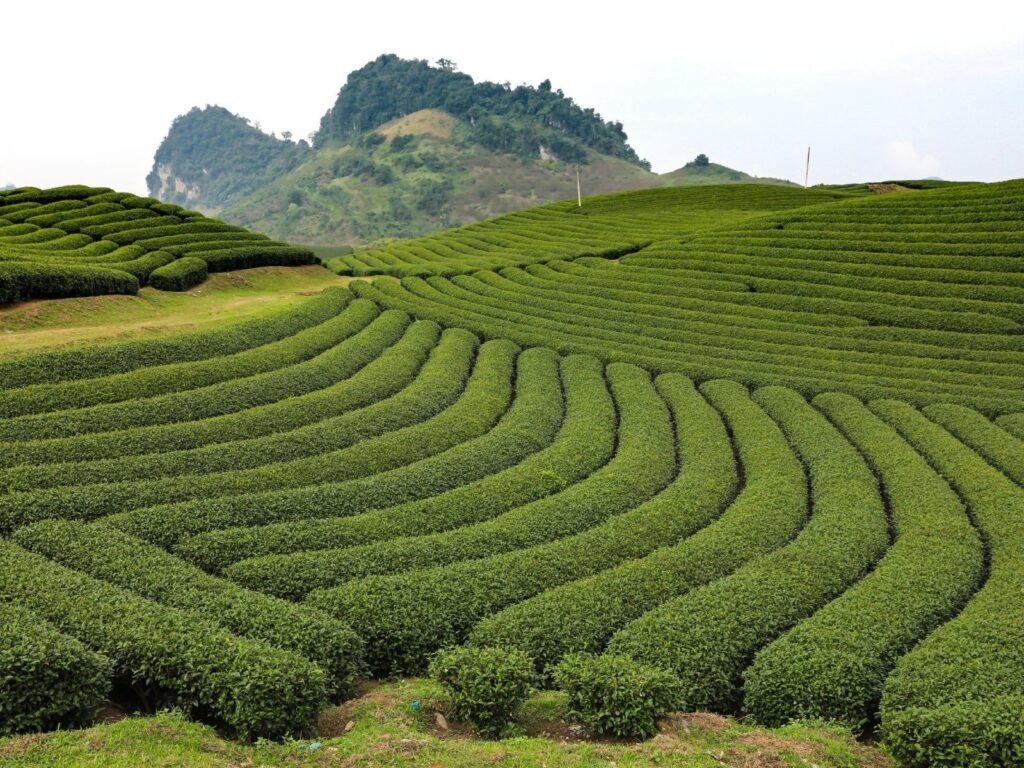
Regional Weather Breakdown
Northern Vietnam
- Winter (Dec–Jan): 10–18 °C, mist and drizzle; Sapa may reach near-freezing.
- Spring (Feb–Apr): 18–25 °C; blooming valleys; light showers.
- Summer (May–Aug): 30–35 °C; high humidity; daily downpours.
- Autumn (Sep–Nov): 20–28 °C; clear skies; golden rice terraces.
Best Time for North: February–April and September–November.
Central Vietnam
- Dry Season (Feb–Aug): 25–35 °C; minimal rain—ideal for beaches and coastal drives.
- Rainy Season (Sep–Jan): Heavy rains; typhoons (Oct–Nov); risk of flooding in low-lying areas.
Best Time for Central: March–May, when rainfall is at its lowest and sea conditions are calm.
Southern Vietnam
- Dry Season (Dec–Apr): 25–35 °C; low humidity—perfect for island hopping and Delta cruises.
- Wet Season (May–Nov): Afternoon showers; brief but heavy storms; humidity peaks.
Best Time for South: December–April for consistent sunshine and comfortable conditions.
Season-by-Season Travel Guide
Spring (February–April)
- North: Peach and cherry blossoms in Sapa; 18–25 °C in Hà Nội.
- Central: Start of dry season; 28–32 °C and clear blue skies in Hội An.
- South: Continued dry weather; 25–34 °C—perfect for the Mekong Delta and beach days.
Highlights:
- Tết (Lunar New Year): Late January to mid-February. Festivals, dragon dances, special foods such as bánh chưng and giò lụa.
- Perfume Pagoda Pilgrimage: Boat rides and mountain treks near Hà Nội, drawing devout pilgrims and photographers alike.
Insider Tip: Book peak-season hotels at least three months in advance to secure the best rates and locations.
Summer (May–August)
- North: Hot (30–35 °C) and humid; best to explore in early summer (May–June) before monsoon intensity.
- Central: Prime beach weather; little to no rain until late August.
- South: Transitional wet season; mornings clear, afternoon storms refreshing the air.
Highlights:
- Da Nang International Fireworks Festival: June–July, weekly displays over the Han River with live music and citywide celebrations.
- Adventure Sports: Kite-surfing in Mui Ne, snorkeling in Phú Quốc, and canyon swings in Da Lat.
Travel Tip: Schedule strenuous outdoor activities before 11 AM and after 4 PM to avoid peak heat.
Autumn (September–November)
- North: Crisp, clear days; rice terraces in Sapa turn golden after harvest.
- Central: Typhoon risk decreases by November; some residual rain in September–October.
- South: Rainfall tapers off; still warm enough for beach escapes.
Highlights:
- Mid-Autumn Festival: September–October. Lantern processions in Hội An, mooncake tastings everywhere, family-oriented celebrations.
- Rice Harvest: Spectacular golden fields in northern valleys and the Hà Giang loop.
- Caution: Monitor weather alerts if visiting the central coast in October due to potential storms.
Winter (December–January)
- North: Cool (10–18 °C); ideal for cozy cafes and cultural tours in Hà Nội.
- Central: Mild (22–28 °C); low rainfall makes imperial city sightseeing in Huế very comfortable.
- South: Prime dry season (25–32 °C); best for beaches, islands, and Mekong Delta exploration.
Highlights:
- Christmas & New Year: Festive light displays, rooftop parties in Ho Chi Minh City and Hà Nội, seasonal menus in international hotels.
Booking Advice: Reserve hotels and air tickets by September for December travel to avoid sold-out accommodations.
=> Explore more tour on Traveloka.
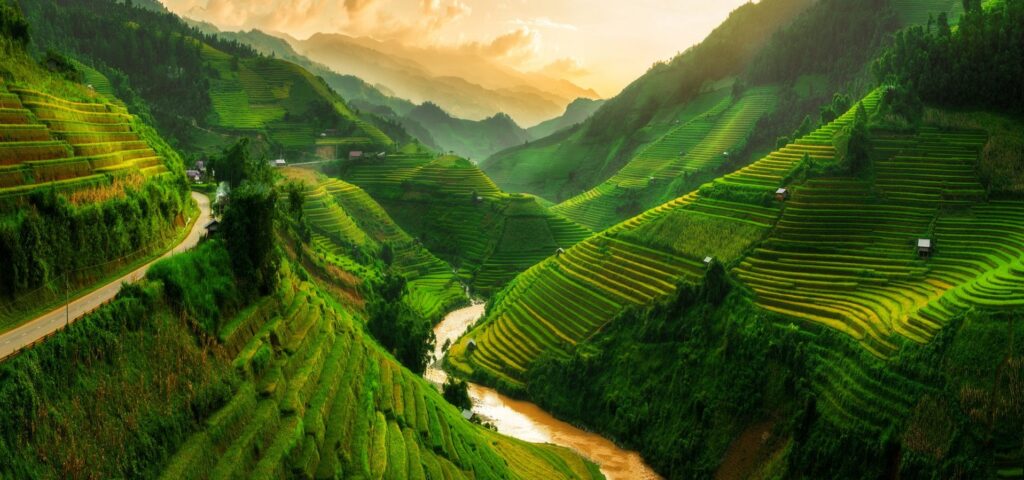
Peak, Shoulder & Low Seasons Explained
| Season Type | Months | Characteristics |
| Peak | Dec–Feb, Jun–Aug | Outstanding weather regionally; highest prices; crowded sites. |
| Shoulder | Mar–May, Sep–Nov | Good weather; moderate pricing; manageable crowds. |
| Low | Jul–Aug (north), Oct (central) | More rain; significant discounts on travel services. |
- Peak Season Tips: Book 3–6 months in advance; consider flexible cancellation policies.
- Shoulder Season Benefits: Save 15–30% on travel costs; enjoy balance between weather and crowd levels.
- Low Season Warnings: Prepare for rain delays; carry waterproof gear and adjust your itinerary as needed.
Festivals & Cultural Highlights
Aligning your trip with Vietnam’s festivals can transform your visit from sightseeing to cultural immersion:
| Festival/Event | When | Where | Highlights |
| Tết (Lunar New Year) | Jan/Feb | Nationwide | Family reunions, dragon dances, red-lucky envelopes. |
| Perfume Pagoda Pilgrimage | Feb–Mar | Hà Nội outskirts | Spiritual boat rides and mountain treks. |
| Hue Festival (biennial) | April | Huế | Traditional music, art, costume parades. |
| Da Nang Fireworks | Jun–Jul | Đà Nẵng | International competition over the Han River. |
| Mid-Autumn Festival | Sept–Oct | Nationwide | Lantern displays, mooncakes, children’s activities. |
| Christmas & New Year | Dec | Major cities | Festive light displays, special events, parties. |
Participating in these events offers a window into Vietnam’s rich cultural tapestry and communal spirit.
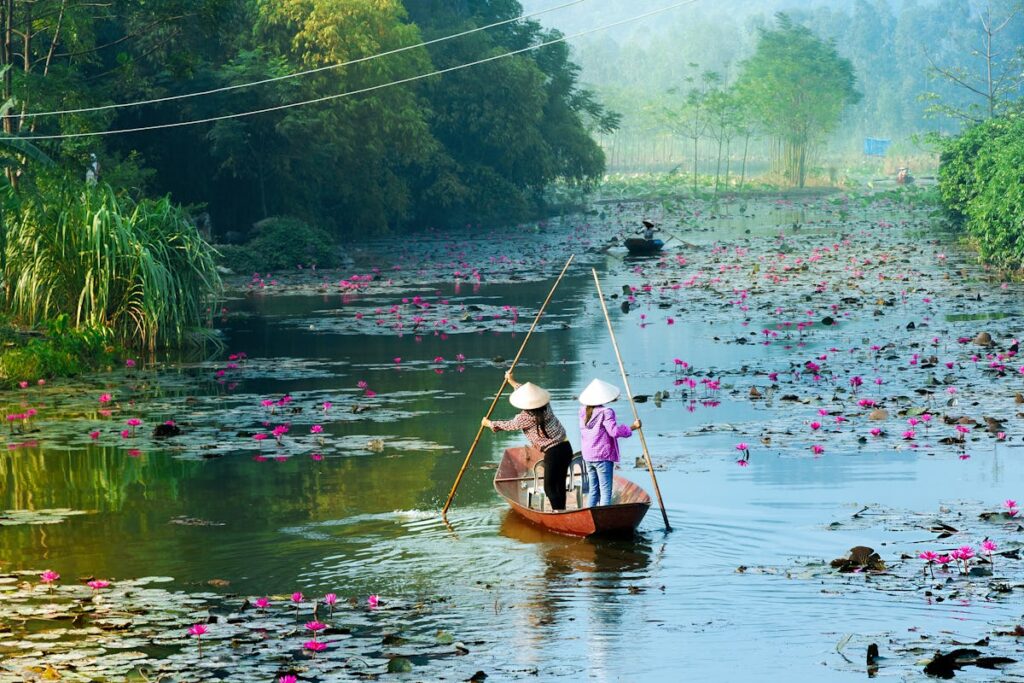
Practical Planning Tips
- Advance Reservations: For peak months and festivals, secure flights and accommodations 4–6 months ahead.
- Weather Monitoring: Use localized weather apps (AccuWeather, NCHMF) to track daily forecasts and storm alerts.
- Layered Packing: Bring light layers for the north’s winter chill and breathable, sun-protective fabrics for the south.
- Buffer Days: In monsoon-prone regions, build in extra days to accommodate weather-related delays.
- Travel Insurance: Ensure coverage for trip cancellations, weather disruptions, and medical emergencies.
- Local Connectivity: Purchase a Vietnamese SIM card or rent a portable Wi-Fi device for on-the-go updates and navigation.
By following these tips, you’ll minimize surprises and maximize enjoyment throughout your Vietnam journey.
Sample Itineraries by Season
Spring (14 Days)
1–3: Hà Nội – Old Quarter food tour, Temple of Literature, Tết street markets.
4–5: Hạ Long Bay – 2-night cruise, Sung Sot Cave, kayaking in Lan Hạ Bay.
6–8: Sapa – Village treks, homestay with hill-tribe families, Fansipan cable car.
9–10: Huế – Imperial Citadel, royal tombs, Perfume River boat cruise.
11–12: Đà Nẵng/Hội An – Marble Mountains, My Khe Beach, lantern-lit Ancient Town.
13–14: Phú Quốc – Beach relaxation, snorkeling, night-market seafood.
Autumn (10 Days)
1–2: Hà Nội – Autumn foliage at Hoàn Kiếm Lake, water puppet show.
3–4: Hạ Long Bay – Clear skies, fewer crowds on an overnight junk.
5–6: Đà Nẵng – Golden Bridge at Ba Na Hills, beach time.
7–8: Hội An – Mid-Autumn lantern festival, cooking class.
9–10: Ho Chi Minh City & Mekong – Cu Chi Tunnels, Cai Rang floating market.

Customize these itineraries by adding rest days, side trips to the Central Highlands, or festival events.
Vietnam offers something exceptional in every season. By understanding its three climate zones, recognizing peak and shoulder periods, and aligning your visit with major festivals and events, you can select the best time to visit Vietnam that matches your interests—whether you’re chasing beach days, mountain treks, cultural celebrations, or culinary adventures. Use this ultimate seasonal guide to plan your trip, pack appropriately, and secure the best deals for an unforgettable Vietnamese adventure.
See more post: Vietnam visa requirements: Everything you need to know before your trip

